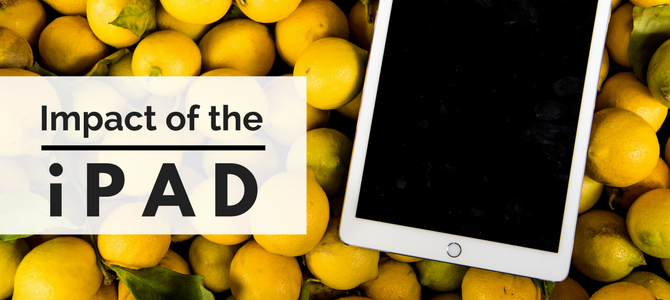Impact of the iPad
A little over 8 years ago the iPad was introduced as the latest piece of technology to innovate businesses and lives around the world. As the Wall Street Journal described it at the time, “The last time there was this much excitement about a tablet, it had some commandments written on it.”
The construction industry has been notoriously slow to adapt technology to their business in order to run more efficiently. In the chart below, provided by ForConstructionPros.com, you can see where the construction industry (bottom line) versus non-farming industries (top line) have been productivity-wise.

With an incredibly large Infrastructure Bill on the horizon, now is more important than ever to ensure job sites are utilizing technology to the best of their capabilities to create more efficient and timely projects.
iPads enabled much more mobility and flexibility within the construction industry. Lending itself to enhancing data collection such as:
- Reports
- Change order requests and statuses
- Costs
- Employee schedules
- Jobsite photos
- Equipment information
- Reported issues
- Daily field reports
- Purchase orders
- Open invoices
What once used to be binders filled with papers that had to be lugged around from job site to job site, is now a two pound tablet that holds everything managers need and more. The purpose of this technology is to have more information at the fingertips of the user and ultimately allow him/her to work more efficiently.
iPads on construction sites enable project managers to obtain the data listed above, but it also, as stated by ForConstructionPros.com, allows them to better understand the “nuances of construction all the way down to the crew level.” This allows managers to make more informed decisions at every step of the project. They can reference data about past projects as well to see the outcome of decisions made then and how the same decisions could reflect in a current project.
With the normality of technology in business now, it’s also no longer seen as impressive by clients, but rather expected. Customers want to see technology being used on job sites because they see time isn’t being wasted on things like paperwork and are therefore, going to see better outcomes as a result.
In regards to investment, iPads average at around $500 whereas a laptop can range from $1000-$3,000 and is a bit more limiting than a tablet. iPads have provided the industry more mobility and an instantaneous ability to add, track and retrieve data corresponding to all phases of a project.
Has your dealership utilized iPads for your business? What have you seen change as a result? Leave your experiences in the comments below!


